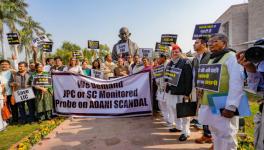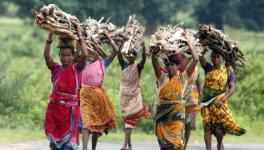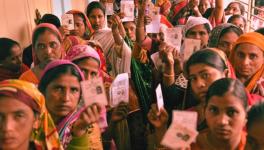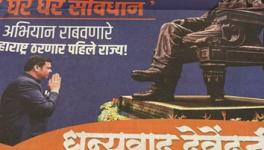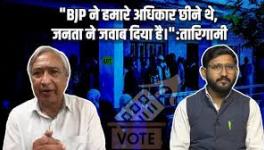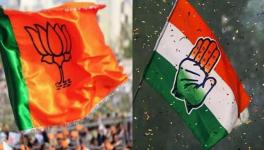Remembering the Telangana Peoples' Struggle Against Feudal-Colonial Rule
The true strength of the Communist Party was demonstrated during the political Telangana earthquake. Telangana was ruled by the feudal aristocratic Nizam Osman Ali Khan, one of the wealthiest individuals in the world, whose pro-British credentials were long established, especially after his predecessors signed the Treaty of Perpetual and General Defensive Alliance with the East India Company in 1800, making the Nizamate 'an equal partner with the Company.'
The Nizam supported the British against Tipu Sultan and kept aloof from the Great Revolt of 1857, assuring British dominance in peninsular India. On his visit to Britain, Salar Jung, the Hyderabadi Prime Minister, was hailed as the 'saviour of the Indian empire'. Osman Ali Khan considered Hyderabad's contributions to both world wars as iterations of his state's historical centrality to the foundation and reproduction of British imperial sovereignty.
As the ruler basked in feudal-imperial glory, the condition of his ruled subjects was dismal. Telangana was a territory that did not receive the boon and bounty of nature. Geographically speaking, it was a semi-arid area with short and fickle monsoon rains. As a result, agriculture was dominated by dry land crops such as millet destined for subsistence, local markets, and intra-village non-commodified distribution. The Nizam squeezed taxes out of the 10,300 villages in Telangana and invested very little back into them.
Furthermore, just like any other feudal society, the agrarian economy was deeply interspersed with hereditary landholders, i.e., the deshmukhs and mercantile caste groups, who would lend money at exorbitant rates to the poor peasantry. The free rein given to these parasitic classes led to a massive incidence of landlessness in the countryside. Most service, non-agricultural, and landowning cultivating castes from the 19th century had become landless agricultural labourers. Only some of them were lucky enough to receive wages, and the rest were subjected to the system of vetti, i.e., forced and unpaid work. Between 1901 and 1941, the ranks of landless labourers swelled by 473% in the district of Nalgonda alone and 234% in Warangal.
Since the Nizam's territory remained immune to mass politics thanks to a ban on nationalist organisations like the Indian National Congress imposed through the New Public Safety Act, 1938. However, the Andhra Mahasabha established by Congress sympathisers in 1930 incubated both Congressmen and Communists alike. Until 1937, Congress under Gandhi pursued a strategy of non-interference in the affairs of princely states. Things changed when the winds of anti-colonial nationalism hit Nizam's state.
Younger activists within the Andhra Mahasabha turned to the communist party out of frustration with the inaction of the Congress supporters. Ravi Narayan Reddy's role was instrumental in the communist capturing of the Andhra Mahasabha. As a leader and later the President of the Andhra Mahasabha, Ravi Narayan Reddy toured the countryside extensively. The biggest problem that the rural peasantry faced was that of the levy system. British India's participation in the Second World War led to a massive expropriation of resources from India. In Telangana, the government decided to take a certain amount of grain as a levy/acre, irrespective of whether there was any produce. As the collectors entered the villages, the wealthier villagers bribed them not to collect from their hoards, hid their surplus grain underground, and sold it on the black market at higher prices. Therefore, the burden of the levy of collection fell hardest on the poor cultivator.
As Ravi Narayan Reddy became the President of the Andhra Mahasabha in 1941, it led to radical resolutions such as the abolition of vetti and the ownership rights of the tenants. The communists endeared themselves to the rural populace by intervening in the levy collection process. They accompanied the peasants, ensured correct measurements of food grains, and secured proper prices. The campaign against the threat of global fascism was not allowed to become a nightmare for the poor peasantry. During the tour, the communists also collected grain and money for the victims of the Bengal famine, in which three million people perished. Collections were made through the burrakatha—a form of rural opera on the Bengal famine which moved the people and brought tears to their eyes.
The spark that set the stage on fire, or according to P. Sundarayya, 'set ablaze the pent-up fury of the Telangana peasantry' was the murder of Doddi Komaraiah.
On July 4, 1946, Komaraiah was killed whilst a procession of Andhra Mahasabha cadres surrounded the landlord Visnuru Ramachandra Reddy's house in the village of Kadavendi. Visnuru Ramachandra Reddy was among the many notorious landlords owning a whopping 40,000 acres of land with whom the police were in cahoots. His notoriety was on display early in the year in the Palakurti village when he forcefully tried to occupy the land of a washerwoman named Ayilamma. Visnuru Ramachandra Reddy had sent goondas to have the harvest taken away from Ayilamma. The Mahasabha members who had intervened were subjected to inhuman torture by the police. Later, a fact-finding team sent by the Mahasabha led by A Lakshminarsimha Reddy for investigation was waylaid by the accomplices of the landlord and severely beaten.
Komaraiah's funeral procession was heavily attended by the peasantry. The day of his death was observed as Komaraiah Day, wherein the peasants pledged themselves to fight landlordism continuously. Sanghams, a voluntary association committed to a radical redistribution of resources, got a new fillip. Sanghams were akin to the soviets that sprang up in Czarist Russia during the 1905 revolution. Moreover, the common denominator linking the sanghams and the Soviets was that they organically arose out of a revolutionary upsurge wherein the masses led the leaders.
People rose in rebellion in the entire Nalgonda district. Groups of people from one village armed with sticks and slings would march to the neighbouring villages and rouse them. It became a common practice to jointly hold public meetings before the brick-built dwellings of the landlords, hoist the red flag and declare, "The sangham is organised here…no more vetti, no more illegal exactions, no evictions."
If the landlord did not carry out these orders of the sangham, he was socially boycotted. The orders of the sangham that none should work for the landlords in their fields or as barber, washerman, or domestic servant were carried out. The radicalism of women was also displayed as they became one of the most important constituents of the sangham. They provided most of the everyday support, such as reporting on police movements, acting as messengers, and feeding fighters and volunteers.
Some daring women, such as Mallu Swrajyam, who became a legislator of the Communist Party in free India, were promoted as Dalam (group) commanders. She became such a menace to the feudal-imperial regime that she carried a price of Rs 10,000 on her head—a huge sum for that time. Another interesting tale is of Dayani Priyamvada, daughter of the chief police officer. At the tender age of fifteen, influenced by her communist brother-in-law, she slipped away from home and joined the Communist Party.
Nizam's bid for independence provided the sangham with a new edge of nationalism. As MN Roy famously stated that communism in the colonies was 'nationalism painted red', the Telangana movement under the communists saw the fullest fruition of this political adage. By June 1948, sangham rajyam had been established in 600 villages in Nalgonda district alone, 400 villages in Hyderabad district, 350 villages in Warangal, 300 villages in Karimnagar, 100 villages in Mahbubnagar, 80 villages in Medak, 50 villages in Adilabad, and 30 villages in Nizamabad, for a total of 1,910 villages.
It must be noted that the land concentration under the landlords in these districts was immense. The administrative report of 1950-51 showed that in the three districts of Nalgonda, Mahbubnagar, and Warangal, the number of landlords owning more than 500 acres each was about 550. They owned 60-70% of the total cultivable land. The extent of exploitation by these landlords can be judged from the fact that 110 of them collected Rs 100 million every year in various taxes or exactions from the peasantry. The whole revenue income of the Hyderabad State before 1940 was no more than Rs 80 million.
The revolution was not restricted to Telangana alone. The coastal Andhra districts had by the 1930s become the bastion of the Communist Party of India. Illustrious sangham leaders who belonged to Andhra were Sundarayya, Chandra Rajeswara Rao, and M. Basavapunnaiah. Urban centres such as Hyderabad city had already been the cradle of communist groups. Ravi Narayan Reddy records that revolutionary poet Makhdoom Mohiuddin, Raj Bahadur Gour, Syed Ibrahim, Alam Khundmiri, and many others ran the 'Comrades Association. Many young comrades who, like Ravi Narayan Reddy himself, transitioned from bourgeois nationalism of the Congress towards Marxism learnt their lessons of world history and communism and fascism from here.
Meanwhile, the Indian National Congress was legalised by the Nizam in 1946. Swami Ramanand Tirtha was elected as the President of the state unit. He belonged to the socialist left-wing within Congress. The discord between the left and the right within Congress was such that Tirtha could win the presidential elections by a narrow margin of three votes. Even before the Telangana agitation picked up steam, the Congress, in 1945, had decided to expel all communist party members holding office in the Andhra Mahasabha.
However, Tirtha continued to advocate communist participation in all bodies. When the agitation started, and the forces of Nizam unleashed a crackdown on communists, the state Congress dithered in making a political choice and wanted to remain neutral. However, the pulls and pressures of the period were such that cunning neutrality would have cost Congress heavily. After the violence in Nalgonda, a fact-finding committee under Tirtha and J. Keshav Rao was impressed by the 'communists' success in empowering the rural poor.
An interesting anecdote regarding Congress's attitude towards the fighting communists deserves mention. Under the pressure of propertied liberals within the Congress, Dwarkanath Kachru, the President of the All-India States People's Conference, came to Hyderabad to conduct his investigation. The report concluded that the 'Hyderabad government should be condemned for its oppression and the communists should be condemned for their anti-national policy.
On a lighter note, this proves that calling communists anti-nationals was not the sole preserve of the BJP and the sold-out media of our times. Be that as it may, in private correspondence, Kachru admitted to Tirtha, addressing the latter as 'Dear Comrade', that on the ground, communists had outflanked the Congress by winning the support of the people. He wrote, "The grievances of the ryots in the districts of Nalgonda are genuine, and no organisation worthy of its name could put up with them any longer. The Communists being the only organisation able to work among them, stole a march over the State Congress and organised resistance of the ryots against the feudal oppression."
After the election of Tirtha as the President for the second time, the synergy between the communists and Congress was widely demonstrated on the streets. The Communist Party's newspaper People's Age praised the state Congress for leading a people's battle and braving the atrocities of the Nizam. The party leaflets always carried the slogan of State Congress Zindabad.
An anonymous member of the Communist Party wrote in his report, "In the initial stages of the battle we hoisted more Congress flags than the Congressmen themselves…we extolled Nehru and Gandhi more vociferously than the Congressmen themselves."
Interestingly, when the intensification of the anti-Nizam sentiments, it was the Congress party that first adopted violent tactics, albeit under the leadership of left-socialists within the party, such as Govind Das Shroff, who had called for a violent end to the 'semi-capitalist and feudal regime'. One of the most daring attacks was at Umri on January 30, 1948. Armed with machine guns, a group of seventy Congress activists attacked the police station, the state bank, and the railway station. With three police officers and two bank employees killed, the bank was robbed of about Rs 200,000 lakh.
Canadian peasant historian John Roosa has argued, "The communists had been engaged in essentially non-violent struggles in the early 1940s and had supported stone throwing and beatings as defensive measures against police raids. They turned to rifles and revolvers for offensive warfare against the state only after Independence, about the same time that the leftists within the Congress… the Hyderabadi communists decided to take up arms only after the party's Central Committee in Bombay gave its approval in September 1947."
Even after Nehru signed the standstill agreement with the Nizam in 1947, primarily because of his preoccupation with Kashmir, the State Congress leftists wanted to overthrow the Nizam through a mass movement from below. They resolved that "negotiations with the Fascist regime in Hyderabad should forthwith come to an end." The position of the Communist Party was no different, as it argued that the standstill agreement only allowed the Nizam breathing space to organise repression. The communists called upon Delhi to support a 'combined Communist-Congress revolt from below against the Nizam.'
As the movement progressed on radical lines, the Congress squads became disillusioned about the actual nature of the struggle.
Sundarayya notes, "The sweep of the anti-feudal and anti-landlord movement and the mass character of the anti-Nizam movement that was taking shape cooled the ardour of the Congress leadership. Having no stomach for such a radical programme, their squads degenerated into raiding and launching attacks on the people, in support of the exploiting landlords. Our squads had to act and disarm many of these Congress squads. It is to be noted that quite a large number of militant and honest members of these Congress squads joined us later and fought together."
This clarifies the calumny thrown about by liberals and the right-wing that communism and communists are essentially violent. In politics, violence by communists has been a tactical question imposed by extreme political necessity and never a strategic choice, despite injunctions by Karl Marx and Leon Trotsky that 'force is the midwife of history, and that 'the devil does not cut its own claws', respectively.
The direct fight against the Razakars during the one year of the standstill agreement was taken up wholly and solely by the Communist Party of India. Village squads were formed with about 10,000 members, and regular guerrilla squads with more than 2000 members were formed. In the innumerable struggles and acts of heroism, nearly 2000 militants, communist fighters, and leaders laid down their lives by taking a heavy toll on the Nizam's armed personnel, police agents, Razakars, landlords, and their goondas: driving them away from villages. Three thousand villages were out of the clutches of the Razakars and administered by village panch committees or gram rajyams. Land distribution, education and health, and all other rural services were organised by these fighting people's committees.
Unfortunately, when the Indian army marched into Hyderabad on September 13, 1948, it was the Communist Party that bore the brunt of the attack. By December 1949, 6,000 communists were rounded up in jails/detention camps, out of which 108 prisoners were tried under a sentence of death. Captain Nanjappa was appointed as the Special Commissioner of Hyderabad. He would order indiscriminate arrests and instant executions on the grounds of mere suspicion.
Despite his notorious image, the support the communists got from the people of Telangana led him to write in May 1950, "The Communist does not loot or rob or trouble the average villagers, nor does he molest their women. They indulge in regular propaganda in the villages, collect their food from the villages, and subscriptions to their party funds. Many of them are highly educated and are educated by high idealism... Communists have inspired in their (the poor peasants) a certain amount of sympathy, if not for the ideals for which they are preaching, at least for the practical good they sometimes do to the average villager by way of distribution of land etc. During the Razakar Regime, these Communist leaders, helped the villagers to defend themselves against the Razakar atrocities and thus gained their affection also to a great extent. A large section of the rural population thus feels that the Communists are trying to help the poorer classes."
The class that benefitted the most from the military regime during the police action was that of big landlords. They became allies of the police and returned to their respective villages to identify sangham leaders and members of the Communist Party. For instance, Bhogala Veerareddy, the landlord of Bakkamantulagu Choutapalli area, and his brother, Pichireddy, used to participate in the searches for the sangham leaders and insulted the wife of the leader, Saidireddy. However, the landlords had firearms, so they decided to go to their houses with lathis and knives to teach them a lesson. Only through such reprisals did the search and arrests of sangham leaders stop.
Another important angle that is often broomed under the carpet is that of communalism. The police action, ruthless as it was, accentuated communal sentiments, the basis of which was the rule of Muslims over a predominantly Hindu population. Like all regressive tropes, this sidelined the fact that feudal absolutism of Nizam was economically extractive, like that of a rule of any other Hindu Raja. The conditions of the peasantry in other princely states ruled by a Hindu King were no less different. Everywhere the peasantry was pared to their bones.
Notwithstanding this, after the communists, the poor Muslims became the target of police action. Surprisingly, ruthless individuals such as Kasim Rizvi, leader of the Razakars, were let off by the police. Ironically, the Sunderlal Committee, in its investigations, noted that in Latur, the hometown of Rizvi, almost 1,000 Muslims had been killed. Communalism became rife when Hindu communal organisations poured in from Sholapur, and the Arya Samaj became active. Regrettable incidents of forceful conversion and tattooing of Muslims, including women, with Hindu symbols were widely noted by the Sundarlal committee report.
The Communist Party played its role during this period of communal conflagration. Sundarayya notes, "Thanks to the Party's leadership that the reprisals against Muslims after the 'police action' were prevented in the Telangana area; whereas in many areas in the Marathwada region, where the democratic movement was not as strong as in Telangana, reprisals occurred on a large scale."
By 1951, the Communist Party had withdrawn from the Telangana struggle. The gains were seen during the General elections when the communist-led People's Democratic Front (PDF) candidates won thumping majorities and many senior leaders of the Congress lost their deposits. In the Nalgonda, Khammam, Warangal and Karimnagar districts, the PDF won all seats except four. In the whole of Telangana, 40 PDF and 10 Socialist and Scheduled Castes' Federation candidates supported by the PDF won out of a total of 100 candidates. Well-known Congress leaders were defeated. Seven out of 14 Lok Sabha seats were won by the PDF candidates. Communist Party's Ravi Narayan Reddy polled more votes than even Jawaharlal Nehru in the electoral contest.
Today, when the Indian peasantry has been bled by neo-liberal policies and farmers' suicide has become endemic, we must remember the lessons of the Telangana revolution. Chief among these is that oppression has its summit, whereas emancipation knows no boundaries. A new and exploitation-free world can be created; it must be created—comrades of Telangana have taught this to us.
The writer is a research scholar with the Department of World History, University of Cambridge. The views are personal
Get the latest reports & analysis with people's perspective on Protests, movements & deep analytical videos, discussions of the current affairs in your Telegram app. Subscribe to NewsClick's Telegram channel & get Real-Time updates on stories, as they get published on our website.










